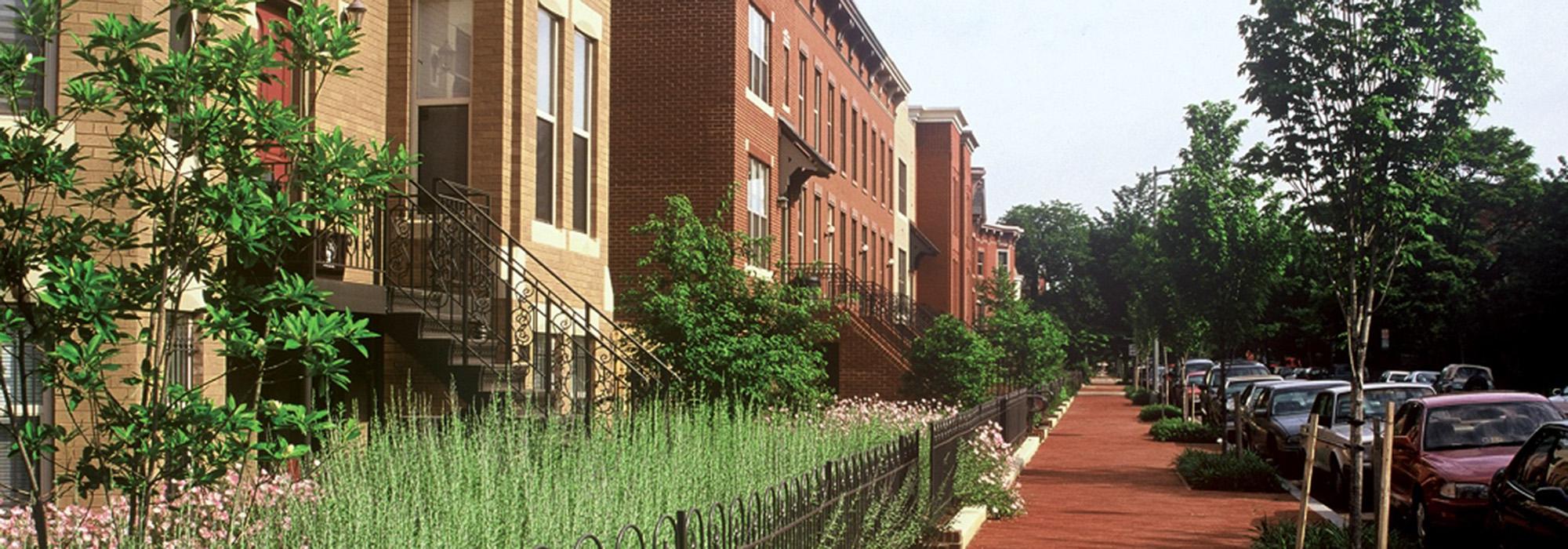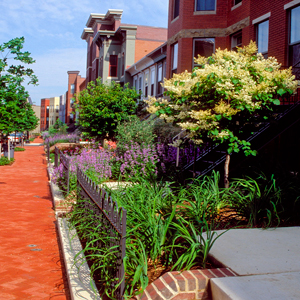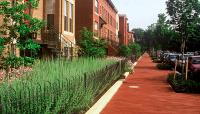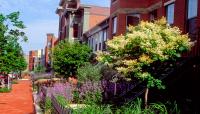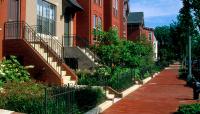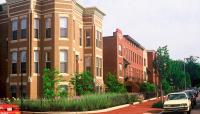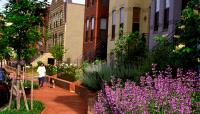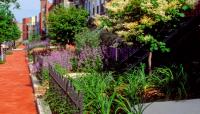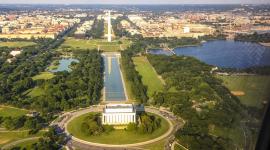The townhomes and streetscapes of this 5.6-acre mixed-income housing community were designed to blend with the surrounding Capitol Hill neighborhood. The townhomes replaced garden apartments built in 1941 as public housing, known as the Ellen Wilson Dwellings. In time, the apartments were neglected and slowly deteriorated, finally closing in 1988. A diverse group of neighbors then formed a community development corporation and, in partnership with the District of Columbia Housing Authority, commissioned Telesis Corporation to develop a master plan for new units. The initiative received a HOPE VI grant from the U.S. Department of Housing and Urban Development, and demolition followed in 1993.
Today the site comprises 134 townhouse units completed in 1998. Organized along two newly created streets, five building types designed by architect Amy Weinstein offer architectural diversity while echoing the Victorian styles of nearby buildings. James van Sweden and his firm Oehme, van Sweden & Associates paved the sidewalks in brick, punctuating them with replicas of Washington’s historic light pole standard, alternating with canopy trees underplanted with groundcovers. Front yards, enclosed with ornamental metal fences and edged with raised concrete curbs, were planted with small flowering trees and shrubs, perennials, ornamental grasses, and other herbaceous plants. Each of the courtyards nested between the units comprises a terrace, a small lawn, and a flowering tree. The use of brick in building facades and on the sidewalks is repeated in the low walls that divide the yards, a pattern that continues throughout the larger neighborhood.



